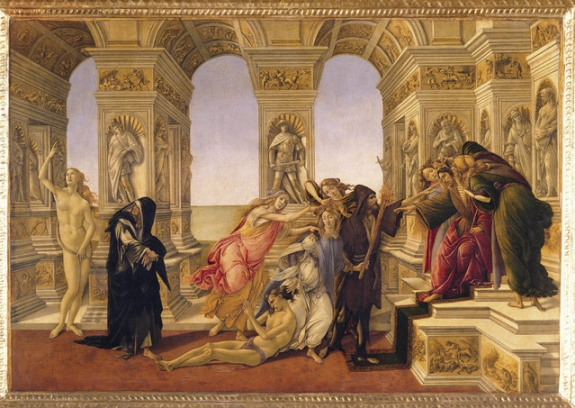The Chapman brothers, when I talked to them recently, had an intriguing line: “There are no works of art without money, there’s no money without art,” Jake declared. “Art is the supreme expression of capital.” Dinos nodded.
What neither added was that that link was just as close in 1511 as it is in 2011.
To put it another way, the connection between bankers and artists goes back to the Italian Renaissance. This relationship will be the theme of an exhibition opening next month at the Palazzo Strozzi in Florence: “Money and Beauty: Bankers, Botticelli and the Bonfire of Vanities.”
For good or ill -- depending on your point of view -- two of the major innovations of that period were modern banking and modern art. The Renaissance marked the beginning of the avant- garde. At the time it was noted that the work of Leonardo, Michelangelo and Raphael made what had come before look old- fashioned. In the early 16th century, those three great masters were cutting-edge.
Renaissance bankers also were pioneering, not in perspective or chiaroscuro, but in such financial techniques as the letter of exchange, predecessor of paper money. Then as now, banking posed a dilemma. As Tim Parks, curator of the exhibition, puts it in the catalog, “How can we keep our cash and be considered good?”
Cosimo de’Medici (1389-1464), founder of the family power base, put this problem to the Pope (who happened to be his client).
Spiritual Capital
Spend 10,000 florins on restoring the Convent of San Marco, the Pope advised. Thus financial capital was transformed into the spiritual kind. Cosimo’s largesse to a deserving institution isn’t far from present-day solutions to the same quandary: donate to charity, build a museum, endow a university. Art can be a kind of spiritual capital; Fra Angelico frescoed the walls of San Marco and we’re still uplifted by what he did.
Of course, there was also a more private market for art. Agostino Chigi (1466-1520), a super-rich banker-entrepreneur in Renaissance Rome, employed Raphael to embellish his pleasure villa beside the Tiber with some of the most stylishly erotic nudes ever painted.
Posterity is grateful, as we are for so many of the extravagances of Renaissance financiers. They turned out to be fundamental to European culture though to be fair, a lot of great art was funded by other wealthy members of Renaissance society such as murderous aristocrats and avaricious clergy.



